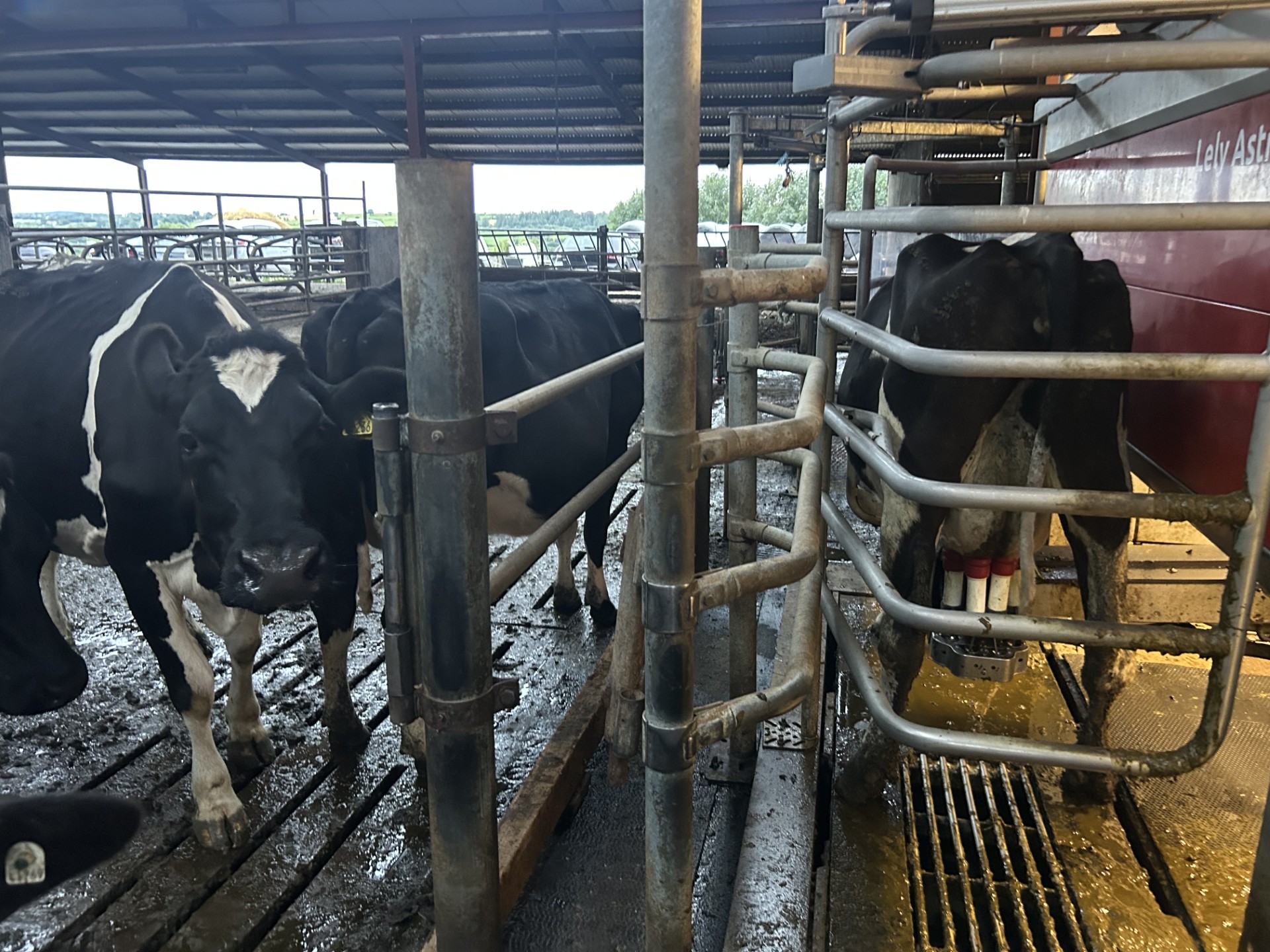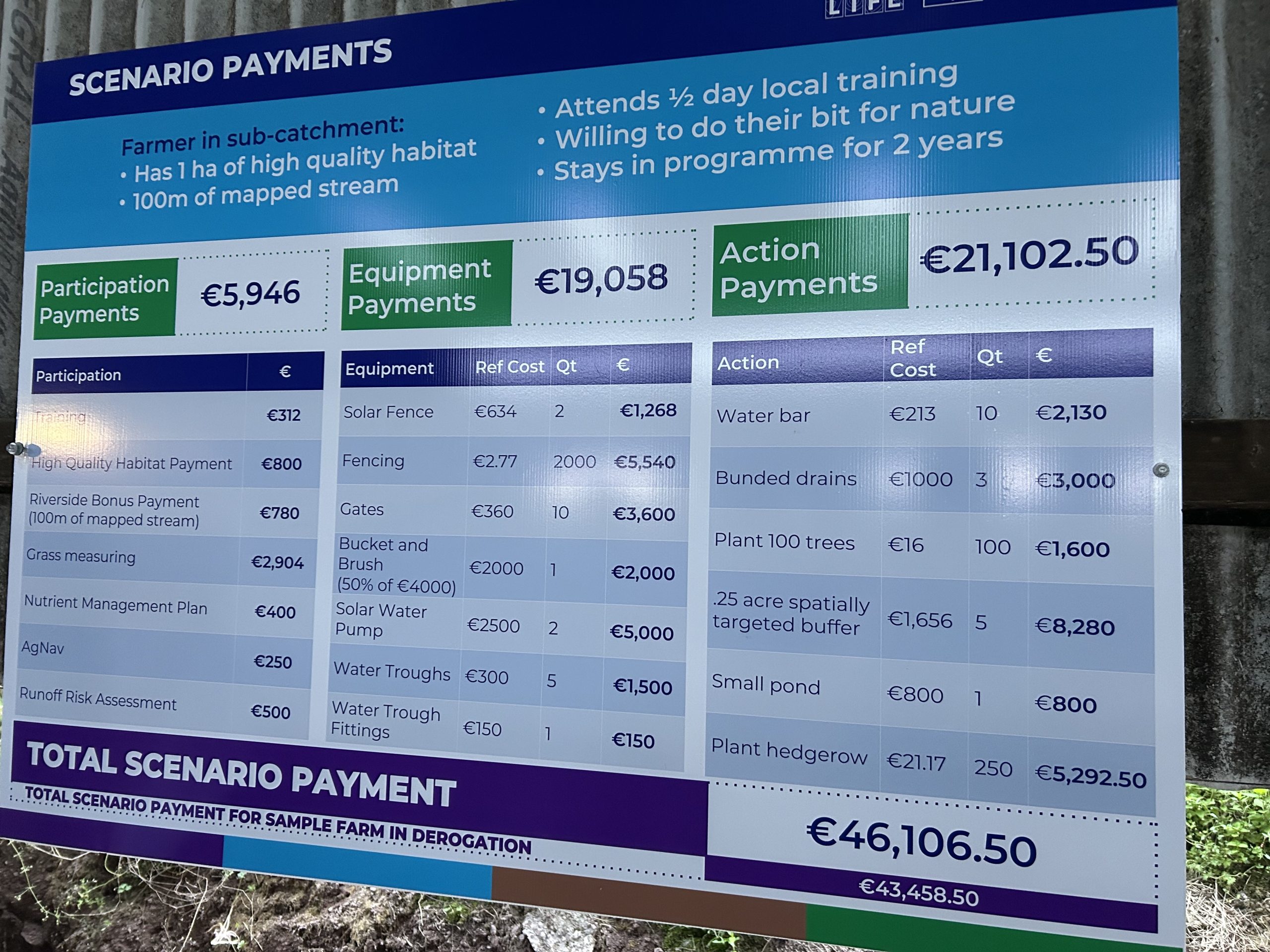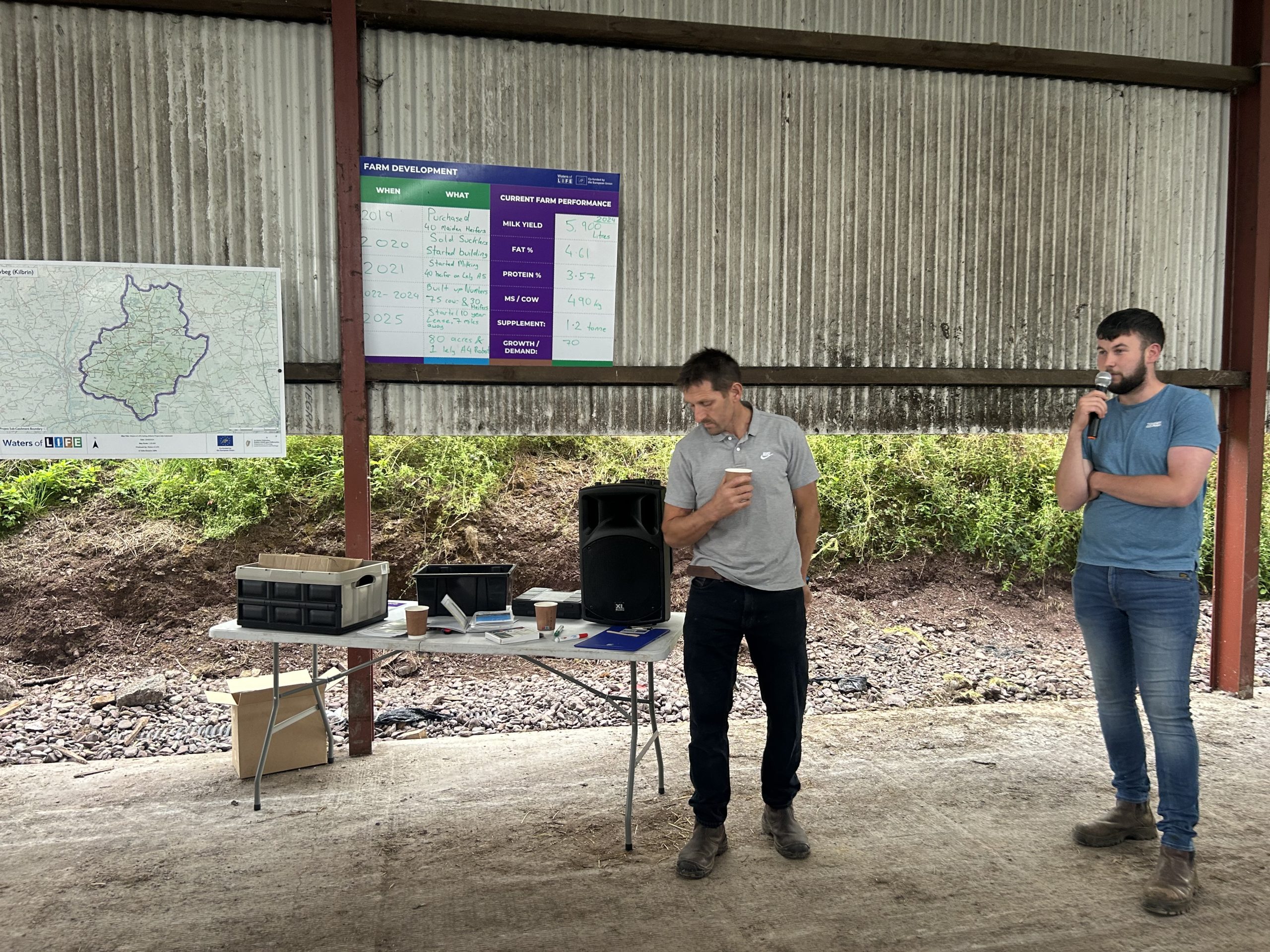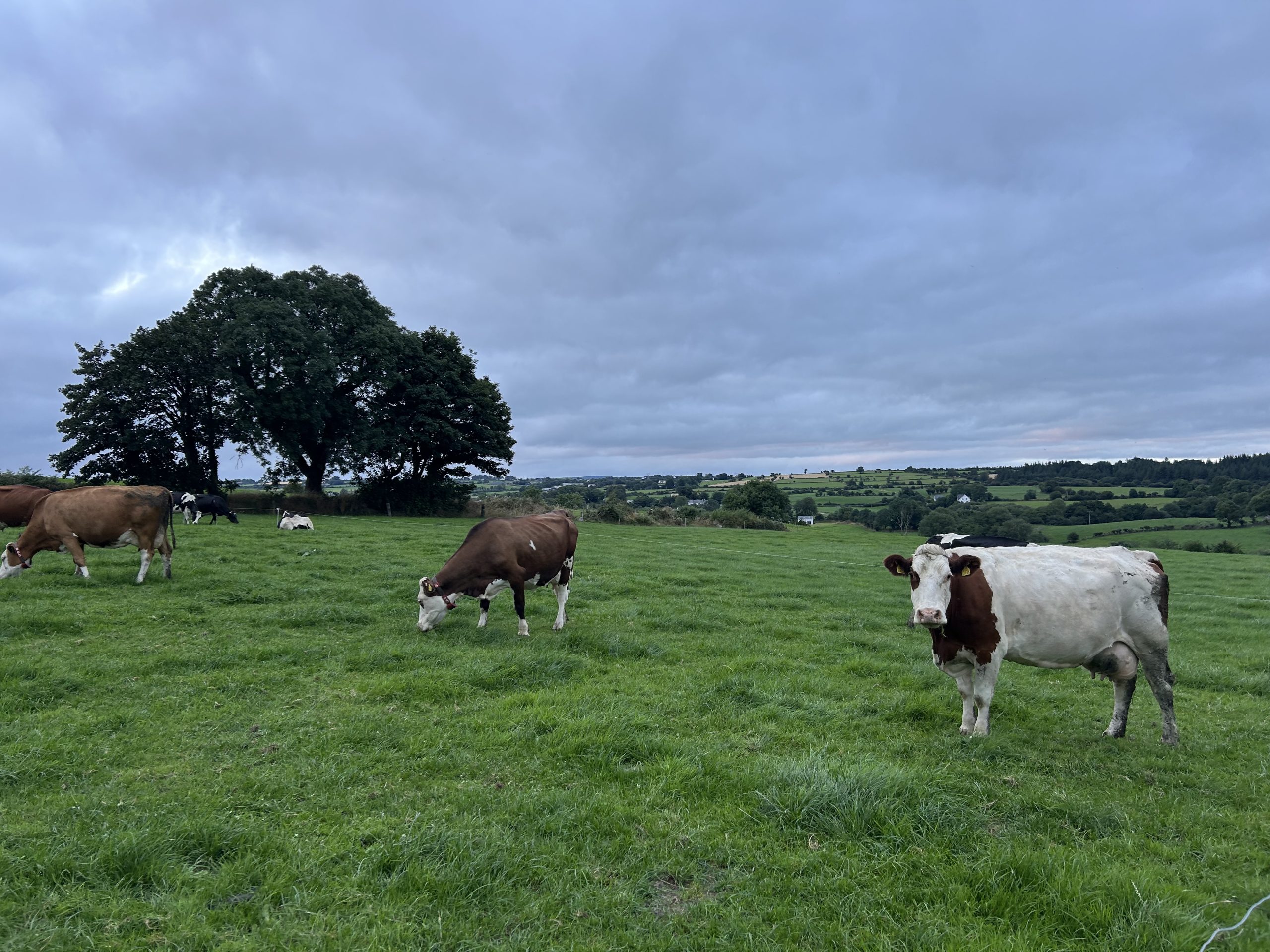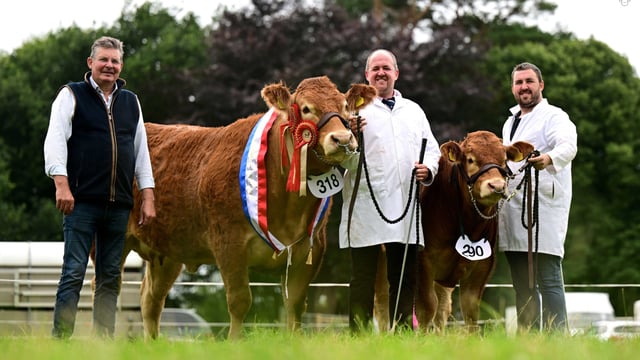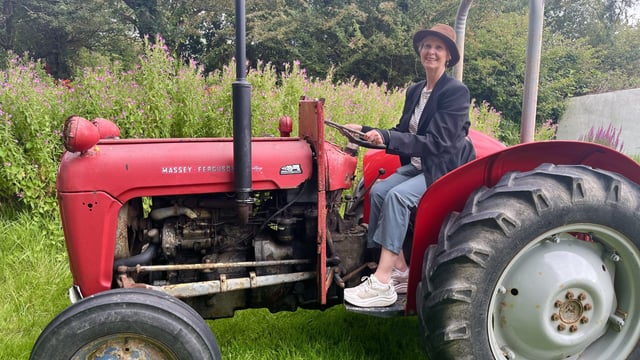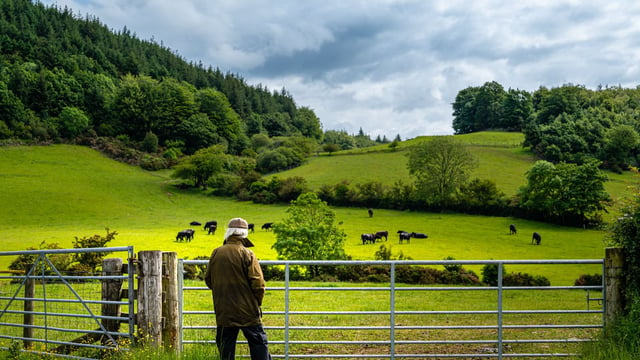Three-way cross-breeding, robots & using Waters of LIFE funding in Cork
At a recent farm walk in Vicarstown, Co. Cork, the Roche family hosted a number of farmers to learn more about the Waters of LIFE funding, their robotic milking system, and their current performance.
Huge crowds gathered to see the Lely robot in action on the farm, but to also discover the funding they can avail of through Waters of LIFE.
The programme is designed to reward farmers for protecting and improving water quality.
Alec, Conor, and James Roche are farming in partnership, milking 130 cows across two blocks of land, with the assistance of a robot on each block.
They have a key focus on protecting their business through doing what they can to improve water quality.
Conor Roche has signed up for the programme and told attendees that "if we want to stay farming, we have to do this", adding that he did it "to protect our business".
Agricultural scientist, Diarmuid McSweeney highlighted to farmers that entry is open to farmers with a herd or tillage number in any of the Waters of LIFE five demonstration sub-catchments.
The Roche family are in the Shournagh sub-catchment. They see being involved as a win-win, as they are getting paid to take measures that improve farm efficiency, sustainability, and water quality.
The five sub-catchments are as follows:
- The Shournagh sub-catchment runs south from Donoughmore to Tower in Co. Cork along the Shournagh and Sheep Rivers;
- The Islands sub-catchment is in the municipal districts of Roscommon, Co. Roscommon and Ballinasloe, Co. Galway;
- The Graney sub-catchment is in the municipal districts of Killaloe in Co. Clare and Loughrea in Co. Galway;
- The Avonmore sub-catchment runs from Sallygap to Laragh in the Co. Wicklow uplands around the Glenmacnass, Inchivore and Annamoe rivers;
- The Sheen catchment in Co. Kerry is a control catchment and is not included in the programme.
The Waters of LIFE agri-environmental programme is being piloted to reward farmers for protecting and improving water quality.
Farmers receive results-based payments as well as payments for general and supporting actions. Payments for Year 1 farmers have already commenced, including over €37,000 to date for training and knowledge transfer events.
The programme includes a new riverside habitat scorecard for farmers with river frontage, which offers payments of €2,000/ha on a 10/10 habitat score for a fenced or uncultivated strip along the river in areas of improved grassland and tillage, up to a maximum width of 20m.
The portal on the Waters of LIFE website will remain open until August 31, 2025. Programme entry for Year 2 will commence in early 2026 and is funded until 2028.
As new entrants in 2019, the Roches purchased 40 maiden heifers, sold all their sucklers the following year and began building their herd.
They started milking in 2021, 40 heifers one Lely A5 robot and gradually built up numbers to 75 cows and 30 heifers in 2024.
An opportunity then arose to lease another block of land where they purchased another Lely robot and began milking cows off that block.
The Roches are now currently milking about 60 cows on the home block and have 70 cows on another robot on leased ground seven miles away and this has made it a very comfortable system.
Alec Roche praised the robots, as he mentioned that all three of the Roches have jobs off the farm. He said that the robot allows them time and flexibility.
He also highlighted that the robots have improved their grassland management drastically, as he said that having fresh grass in front of cows is the key to keeping them moving and going through the robot.
They are operating an ABC grazing system, which ensures that cows are reaching at least two milkings/day and that it drives performance as grass intake is constantly being maximised.
The Roches operate a 80% spring calving and 20% autumn calving split system which bodes well with the robotic system and how they are set up on the farm with grazing and cubicle infrastructure.
Starting out milking, the Roches bought in mainly Holstein Friesian heifers but have since started breeding in Fleckvieh and Viking Red genetics.
Every breeding season, the Roches buy in a number of Holstein Friesian, Fleckvieh, and Viking Red straws and match them up to cows accordingly in order to keep an effective three-way cross.
Alec Roche told Agriland that, in general, they use all of their replacement semen in the first month of the breeding season, picking bulls with high fat and protein, but also with good udders and type.
Type is important to the Roches and they told attendees that they would not be fixated on the Economic Breeding Index (EBI), but look for a well-balanced, square, and hardy cow.
This strategy seems to be working well for the Roches as, last year, the cows produced 5,900L of milk/cow, with 4.61% fat and 3.57% protein.
This accumulates to 490kg of milk solids/cow while feeding 1.2t of meal and mainly driven through a simple system, focused around grass, going in at optimal 1,400kg DM/ha covers and maximising intakes.


